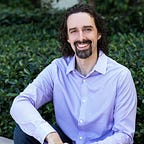Prime Movers Lab Webinar Series: Portable Batteries
A conversation with industry experts on trends and technologies related to lithium and non-lithium electrochemical batteries
Portable energy storage enables our modern way of life. From smartphones to wireless earbuds, drones to electric vehicles, our world is shaped by our ability to store and harness power where and when we need it. In this episode of the Prime Movers Lab webinar series we speak with three experts in the field of portable energy storage, specifically electrochemical batteries.
Expert Panelists:
Richard Wang is the founder and CEO of Cuberg, with the mission to create the world’s safest Lithium-metal anode batteries, which could enable the rise of electric aviation through a massive increase in energy density over today’s lithium ion cells.
Christine Ho is the founder and CEO of Imprint Energy which is commercializing a print-based manufacturing process to make flexible, ultra-thin batteries based on non-lithium materials. These flexible zinc batteries can be applied to surfaces in place of paper labels, providing functionality for IoT devices, logistics trackers, and medical devices.
James Kaschmitter has over 30 years of experience in Li-ion batteries, supercapacitors and fuel cells. He has built 4 companies and pioneered some of the first Li-ion manufacturing in the US. His companies include PolyStor Corporation (founded in 1993), PowerStor Corp (1997), UltraCell Corp (2002), and today he leverages his expertise through his company SpectraPower, serving as Silicon Valley’s battery lab and offering dedicated battery/supercap R&D services.
A Sampling of Technical Takeaways (from this episode):
- Despite some drawbacks, lithium chemistries will remain the key energy carrier in batteries for the forseeable future. The production methods are quite mature, having been refined for over 30+ years. And lithium is the most attractive material on the periodic table from an electrochemical standpoint. Lithium is incredibly energy dense, being both small in atomic diameter, as well as very chemically active.
- However, there are regulations and mandates in place for some companies and applications to avoid lithium battery chemistries entirely in favor of more stable alternatives. This is especially true where safety is of primary concern, such as when a battery fire would be likely to cause injury or loss of life. Examples are FAA regulations for aviation and air transport, as well as restrictions on medical devices or sensors that might be in close contact with the human body. Thus there remains persistent motivation in the battery industry to pursue non-lithium battery chemistries, and a substantial amount of research funding dedicated to this purpose.
- Zinc is a promising alternative to lithium. Zn isn’t quite as energy dense as Li, but is cheaper, easier to handle, more plentiful on earth, and less prone to producing toxic or hazardous reactions. Manufacturing processes using zinc don’t need dry rooms, glove boxes, or specialized equipment to assemble the materials. And zinc batteries can be discarded in a landfill safely at end of life.
- Lithium performance is excellent and improving at a rate of about 5% per year.
- Three big advances that will solidify lithium as the battery of the future will be the elimination of Cobalt (due to price swings and very limited geographical distribution), fast charging (5–10 minute charge time will have huge impact on electric vehicles and portables), and safety technologies that can stop thermal run-away events (such as better separators and more stable electrolytes).
- Battery safety issues are real, though they are also over-sensationalized by the media. Engineers have been working on this problem for a long time, so they have reduced the failure rates drastically over the years, but it is still far from zero. There is a real and statistical chance of failure or fire with all lithium-ion constructions today so it is up to engineers to design battery packs that can tolerate the failure of a single cell without causing catastrophic failure.
- Machine learning approaches may have tremendous industrial potential for advancing battery science.
Sample Take-Aways Related to Investing in Batteries:
- Battery technologies are so complex that unless one is an expert it is very difficult to identify what is a true breakthrough and what might be a dead end. This is one reason that this sector has had such a spotty history of investor returns.
- Battery cell manufacturing is a very competitive and low-margin business, and requires huge investments to get started. But there are many attractive investment opportunities in other parts of the industry such as testing services, component suppliers, and equipment manufacturers.
- With improving battery performance we can expect to see expansion of electric aviation, as well as more rollout of distributed sensor networks, IoT devices, and novel medical devices.
- New battery technologies MUST be able to scale in production in a way that can compete or complement the existing lithium-ion manufacturing infrastructure.
The points above represent only a fraction of the insights I learned today in talking with our panelists. If you’d like to dive deeper, many of the topics we touched on in this webinar are covered in more detail in our Portable Battery Research Briefing. This report covers some of the emerging battery markets at a high level, as well as providing an introduction to how batteries are constructed, and considerations for investing in this space. And for a very basic introduction to battery science aimed towards our youngest fans you can check out our Prime Movers Lab Kids Corner: Batteries!
Prime Movers Lab invests in breakthrough scientific startups founded by Prime Movers, the inventors who transform billions of lives. We invest in seed-stage companies reinventing energy, transportation, infrastructure, manufacturing, human augmentation and computing.
